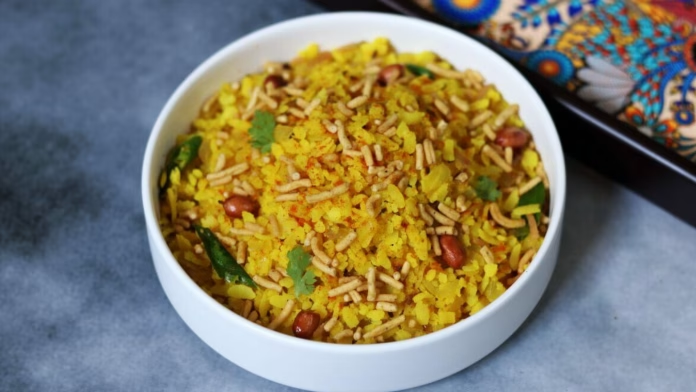Poha, also known as flattened rice, is a popular breakfast dish in India. It is made by parboiling rice and then flattening it to make it thin and light. Poha is a versatile dish that can be eaten in many ways, including with vegetables, peanuts, and spices. It is a popular breakfast dish across India that is loved for its ease of cooking, delicious taste, and health benefits.
Here are some reasons why Poha is the ultimate breakfast powerhouse:
Good for Gut Health:
Poha is light on the stomach and easy to digest. When cooked with veggies, it becomes a wholesome meal that can help you feel full for longer hours, curbing your need to snack. Poha is also a probiotic food that is made by parboiling paddy. It is then sun-dried and beaten flat before undergoing fermentation. This fermentation process makes poha a good source of probiotics that are essential for a healthy gut. Probiotics help to promote the growth of good bacteria in the gut, which can improve digestion, boost immunity, and even improve mental health.
Keeps You Energized:
Poha is a rich source of carbohydrates, which are essential for providing the body with energy. A plate of poha provides about 76% of carbohydrates and 24% of fats, making it an excellent source of energy for the body. Poha is also a great probiotic source, which allows you to retain microbial flora from digested carbohydrates. Unlike other carbohydrate-rich foods that can lead to weight gain, poha doesn’t store any fat, making it an ideal breakfast dish for weight loss.
Helps Maintain Blood Sugar Levels:
People with diabetes need to be careful about what they eat, as certain foods can cause a sudden rise in insulin levels. Poha is a good source of fiber, which slows down the absorption of sugar into the bloodstream. This prevents a sudden spike in blood sugar levels and helps to keep it stable. Consuming poha regularly can also improve insulin sensitivity, which can be beneficial for people with type 2 diabetes.
Helps Fight Anemia:
Anemia is a widespread issue in India, and poha is an excellent source of iron. Iron is essential for the production of hemoglobin, which carries oxygen in the blood. Iron deficiency can lead to anemia, which can cause fatigue, weakness, and shortness of breath. Consuming poha regularly can help fight anemia and improve the body’s overall energy levels. To ensure better absorption of iron by your digestive system, add some lemon juice to your poha.
Good for Weight Loss:
Poha is a low-calorie food that is rich in fiber, making it an excellent breakfast option for weight loss. The fiber in poha helps to keep you feeling full for longer hours, which can prevent overeating. Poha is also low in gluten, making it suitable for people with gluten intolerance or celiac disease. If weight loss is your goal, your poha recipe for breakfast should include a balance of veggies. Avoid adding potatoes and go easy on the peanuts.
Poha is a delicious and nutritious breakfast dish that is popular in India. It is a versatile dish that can be prepared in many ways, depending on the region and personal preferences. Poha is not only tasty but also has several health benefits that make it an excellent breakfast option. It is light on the stomach, easy to digest, and can keep you energized for longer hours. Poha is also a good source of probiotics,fiber, and iron, making it ideal for maintaining gut health, stabilizing blood sugar levels, fighting anemia, and promoting weight loss.
So the next time you’re looking for a healthy and delicious breakfast option, give Poha a try!










